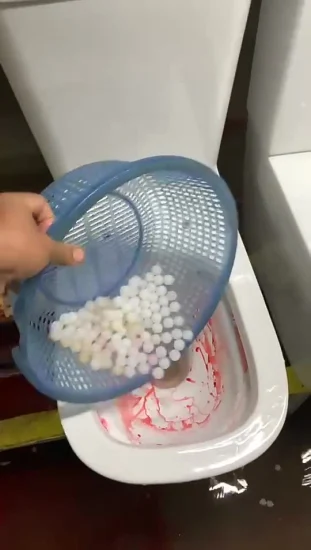Is it Suitable to Dispose of Food Down the Toilet?
Is it Suitable to Dispose of Food Down the Toilet?
Blog Article
The article directly below about Flushing Food Down the Toilet? is especially compelling. Try it and draw your own personal conclusions.

Introduction
Many people are typically confronted with the predicament of what to do with food waste, particularly when it pertains to leftovers or scraps. One typical concern that emerges is whether it's fine to flush food down the bathroom. In this short article, we'll look into the reasons that people could take into consideration flushing food, the repercussions of doing so, and alternative approaches for proper disposal.
Reasons that people might consider flushing food
Absence of awareness
Some individuals may not recognize the possible injury caused by flushing food down the commode. They may mistakenly believe that it's a harmless method.
Ease
Flushing food down the toilet might appear like a quick and easy solution to dealing with unwanted scraps, specifically when there's no neighboring trash bin available.
Laziness
In many cases, people might just select to flush food out of large laziness, without considering the consequences of their actions.
Repercussions of flushing food down the bathroom
Ecological effect
Food waste that ends up in waterways can contribute to pollution and damage aquatic ecological communities. Additionally, the water used to flush food can strain water resources.
Plumbing concerns
Flushing food can bring about clogged pipes and drains, triggering costly pipes fixings and aggravations.
Sorts of food that need to not be purged
Coarse foods
Foods with coarse textures such as celery or corn husks can get entangled in pipelines and trigger blockages.
Starchy foods
Starchy foods like pasta and rice can take in water and swell, resulting in clogs in pipelines.
Oils and fats
Greasy foods like bacon or food preparation oils need to never ever be purged down the toilet as they can solidify and cause clogs.
Proper disposal techniques for food waste
Using a garbage disposal
For homes equipped with garbage disposals, food scraps can be ground up and purged with the pipes system. Nevertheless, not all foods are suitable for disposal in this manner.
Recycling
Specific food product packaging materials can be reused, reducing waste and reducing ecological impact.
Composting
Composting is an environmentally friendly way to deal with food waste. Organic products can be composted and utilized to enhance dirt for horticulture.
The value of appropriate waste management
Lowering environmental injury
Correct waste administration techniques, such as composting and recycling, help lessen pollution and maintain natural resources for future generations.
Protecting plumbing systems
By preventing the technique of flushing food down the commode, house owners can protect against pricey pipes repair work and preserve the honesty of their plumbing systems.
Final thought
To conclude, while it may be tempting to purge food down the toilet for ease, it is very important to comprehend the potential effects of this activity. By embracing appropriate waste management methods and disposing of food waste responsibly, individuals can add to much healthier plumbing systems and a cleaner environment for all.
THINK TWICE BEFORE FLUSHING FOOD DOWN YOUR TOILET IN FALLBROOK CA
Let’s be honest, we’re really supposed to be tossing rotten or leftover food in the compost bin or trash can. But many people like to place scraps of food down the drain of, say, their kitchen sink. That’s why the garbage disposal was invented: so we can continue to place certain foods down the drain without clogging our drain in the process. Smart.
But not all of us have the luxury of having a garbage disposal installed. So, you might continue to shove food down your sink drain anyway – or worse: you might flush them down your toilet! If you’re guilty of doing the latter, you’re going to want to stop, and here’s why:
Toilet Drains Aren’t Designed to Handle Food!
There’s your answer: food just doesn’t belong in your toilet. It may seem like your toilet drain is wider than the drains of your sinks, but truth be told, that isn’t actually the case. The narrower pipes of your toilet leave your plumbing at risk for clogging if you do happen to flush your food. In addition, food doesn’t break down as quickly that toilet paper and human waste do. In turn, this leaves your toilet at risk for a nasty clog.
Although a flush of a tiny pinch of food every now and then isn’t going to completely damage your toilet, there are certain foods that should absolutely not be flushed in your toilet at all. These include starchy foods like mashed potatoes, grains, hard pieces of food that are slow to break down, and fats and oils.
The latter categories of food are particularly problematic as they may harden, expand as they absorb water, break down slowly in your system, or generally create the perfect obstruction with their gelatinous composition. These are all things you don’t want in your plumbing system!
Experiencing a Toilet Clog?
Nobody’s perfect, and we all make mistakes. Sometimes one of the mistakes people make is flushing food down their toilet and later realizing that it wasn’t the best thing to do once they see that their toilet is now clogged. Uh-oh!

I was brought to that write-up about Is it safe to flush food (especially rice) down the toilet? from an acquaintance on another web page. Sharing is nice. Who knows, you could be doing someone a favor. I am grateful for being here. Don't forget to visit our website back soon.
Book Your Service Report this page